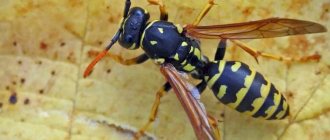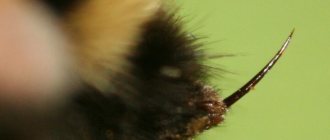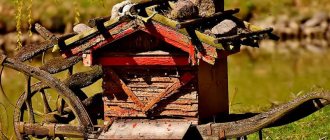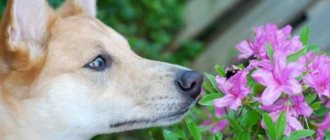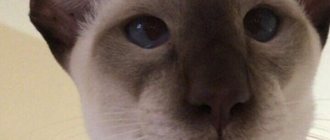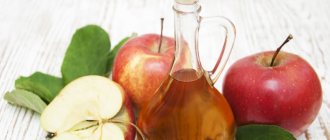In the summer, from July to August, wasps become active. They are attracted to the remains of sweet food and the juice of ripe fruits. A wasp sting is very painful. The skin turns red and swells. The bitten person feels pain and burning. A wasp can bite more than once, but attack 2-3 times with short breaks. A large area affected by poison can cause severe allergies. The temperature rises, a rash appears on the body, and it becomes difficult to breathe.
Children are restless. They love to pick flowers and chase insects. There is a danger to their health from a wasp sting. Today we will talk about what needs to be done if a child is suddenly bitten by a wasp, what are the first actions of parents, and whether to consult a doctor in this situation. Wasps are beneficial: they destroy harmful insects and pollinate plants. But, if their habitat is located near the house or dacha, destroying the wasp nest is necessary to ensure the safety of children.
What to do if a child is suddenly bitten by a wasp
Why do wasps bite? Flying over the berries or fruit that the baby is eating, they sniff the baby. If he accidentally swung his hand, driving her away, then the wasp may perceive this movement as a sign of an attack. Wasps also attack because they want to expel a person from this place in order to feast on the contents of the fruit. When biting, the wasp releases an enzyme that attracts other wasps. The hornet that lives in tree hollows is also a threat to children and adults. There is a white mark on the hornet's chest and head. There are American hornets. They are very aggressive and attack in swarms. They live in depressions in the ground and in empty walls. They have short legs and furry antennae.
A wasp sting will frighten a child and cause him to cry. Parents can be scared too. But it is important to pull yourself together and calm him down so that he understands that everything will be fine. It is necessary to provide the child with first aid correctly. Bites on the face can last for several days. It’s even worse if the bite occurs on the lips or eyelids or scalp. In this case, you need to urgently consult a doctor. Minor redness and swelling can be quickly relieved with antihistamines, and within a few hours the child will forget that he was bitten by a wasp.
Dangerous bites and not so much
A wasp sting on the neck is especially dangerous, as it increases the risk of laryngeal edema. In this case, you need to immediately give the child an antihistamine; if your health worsens, call an ambulance or go to the sanitary inspection center on your own.
If a wasp bites you on the forehead or ear, the reaction will be minimal, since the likelihood of the poison entering the systemic bloodstream in large quantities is reduced. It is enough to simply provide first aid to the child and treat the wound with an antiseptic.
Wasp bites on the lip and eyes also do not pose any particular danger, but almost instantly severe swelling appears, the eyes and mouth do not open. To cure swelling, you need to apply ice cubes and make cold compresses. When bitten on the leg or arm, the reaction may vary; treatment methods depend on the complexity of the symptoms. The wasp is capable of biting in different areas, up to 5 times in one attack.
To avoid serious consequences, you need to provide first aid and monitor the baby carefully for 1 hour. If your health worsens, if the body or any part of it begins to swell, immediately call an ambulance.
First actions after a bite
Wasps do not leave a sting like bees, so you should not look for it at the site of the bite. First of all, you need to wash the bite area with running water to wash away the dirt.
Then the wound should be disinfected. For this you can use Betadine, Chlorhexidine, hydrogen peroxide. You can treat the wound with alcohol or ammonia to prevent further infection of the wound.
After processing it, you need to apply ice or a wet compress for 40-60 minutes. Cold is necessary to reduce swelling and prevent the poison from spreading further. Ice will relieve pain on the child's body. After this, apply a sterile bandage.
Why is it dangerous?
The biggest danger of a wasp sting for a child is the development of an allergic reaction. It can vary in severity from mild swelling and itching to serious symptoms such as:
- weakness, dizziness;
- headache;
- nausea, vomiting;
- diarrhea;
- low pressure;
- rapid or slow heartbeat;
- labored breathing;
- impaired coordination, slurred speech;
- confusion, fainting;
- swelling of the larynx.
In addition, if a child is stung by a wasp, there is a risk of infection of the wound, since dirt or microbes that were on the insect’s body can get into the blood.
Anaphylactic shock
The most severe manifestation of an allergic reaction to a wasp sting is anaphylactic shock. This condition can develop very quickly and in the most severe cases can be fatal. At the first signs of a deterioration in the child’s well-being, parents should immediately call an ambulance, and before it arrives, do the following:
- lay the baby down so that the legs are slightly elevated;
- remove or unfasten tight clothing to make breathing easier;
- make sure that your head is not thrown back;
- If the child is nauseous, turn his head to the side so that he does not choke.
It is necessary to constantly be nearby, monitoring the baby’s condition.
Methods for eliminating pain, itching and swelling
If itching appears at the site of the bite, the child begins to scratch it. Scratching the body can cause the wound to become infected. Therefore, it is important to eliminate itching and pain. The itching sensation occurs due to an allergic reaction to the venom released by the wasp. Therefore, it is best to give your child antihistamines. You can apply antihistamine ointment or gel to the bite site. The components of the venom secreted by the wasp are alkaline. Therefore, you can neutralize it with acid by applying lemon or apple to the wound.
A crushed and washed Kalanchoe or plantain leaf will also relieve pain. You can give your child painkillers based on Ibuprofen or Paracetamol.
Help with mild allergies
The allergic reaction manifests itself within 5-20 minutes. If it is limited only to a local reaction on the skin, treatment is carried out at home with folk remedies and pharmaceuticals. A bite on the arm or leg of a baby is not particularly dangerous; it is limited to unpleasant symptoms on the skin and does not lead to a systemic reaction.
Folk remedies
They include treating the wound with juice, wiping with a decoction, and a compress. What to apply to the bite, in most cases, depends on the situation in which the adult and the injured child find themselves.
- lemon juice;
- vinegar solution - for 1 glass of cool water 1 tbsp. a spoonful of table vinegar;
- baking soda paste - add a small amount of water, stir, apply to the bite area until dry;
- toothpaste with menthol;
- decoction of chamomile, lemon balm, mint;
- tincture of calendula, valerian, motherwort;
- laundry soap;
- shaving foam;
- juice of dandelion, parsley, cucumber, celandine, plantain;
- own saliva;
- alcohol;
- vodka.
Traditional recipes for mosquito bites
Any product with antiseptic, antibacterial, disinfectant, and soothing properties is suitable.
Pharmacy drugs
It is better to treat a wasp sting in a child with a severe allergic reaction on the skin using pharmaceutical drugs that have anti-edematous, anti-inflammatory, anti-allergic, antipruritic, and healing properties.
For children under 1 year old:
- balm Zvezdochka;
- Fenistil gel;
- Psilo balm;
- Rescuer;
- Bepanten.
If a child scratches the wounds and becomes infected, use:
- Solcoseryl ointment;
- Levomekol;
- Vishnevsky ointment.
On a note!
Komarovsky suggests smearing the tumor with Fenistil gel and supplementing the treatment with drops of the same name.
Antiallergic drugs for severe allergies
They have age restrictions. Used if children have been bitten by wasps, resulting in a strong immune response on the skin. Hormonal medications are recommended for use against wasp stings for no more than 5 days. Apply a thin layer exclusively to the affected areas. The frequency of wound treatment is 1-2 times per day.
- Advantan;
- Dermovate;
- Elokom;
- Betamethasone;
- Fluorocort;
- Triaccutane;
- Sinaflan.
Antiallergic drugs for severe allergies
Additionally, antihistamines are prescribed orally that stop the pathological process - Claritin, Fenistil, Diazolin, ElCet, Eden.
Wasp stings in infants
If you have an infant, then be very careful at the dacha, or while relaxing in nature. A child can be bitten by a wasp; the consequences after the bite are unpredictable. The baby's body is very tender, and the poison, having penetrated the skin, will lead to swelling and redness. But don't despair! A wet towel applied to the area affected by the insect for 10 minutes will prevent the poison from being absorbed into the blood and passing further into the tissue. A cold towel will soothe the pain, and a solution of baking soda or 3% vinegar will relieve itching. You can anoint the wound with Fenistil if you have it in your medicine cabinet.
You definitely need to see a doctor. Antihistamines can be taken after consulting a doctor. If a child has a fever, he should be given antipyretic syrup to drink.
Three main violations when treating a bite
If a child has been bitten by a wasp, the first thing parents need to do is immediately calm down and not be nervous. This can greatly frighten a child. And then you need to immediately begin providing first aid.
Often young parents make a number of mistakes that can only worsen the situation. Therefore there is no need:
- Look for an insect sting. The fact is that wasps, unlike bees, do not abandon them. In rare cases, the sting remains in the wound if the wasp was killed at the crime scene.
- Squeeze out insect venom. You won't be able to do this anyway, it can only cause harm. Due to increased blood flow, the poison will begin to spread faster throughout the body. And the possibility of infection in the wound increases.
- Treat the bite site with an adult allergy medicine. Your baby may be more allergic to these medications than to an insect bite.
First aid kit for the country: what you need to have with you to always help your child
If you take your child to the dacha, then you must have a first aid kit with you to help your child in any situation.
You should take antihistamines with you: “Zertec”, “Claritin”, “Suprastin”, “Fenistil”. They will ease allergic reactions in children. It is important to put painkillers in your first aid kit, as well as antipyretics: Nurofen, Ibuprofen, Paracetamol.
Disinfectants and disinfectants should also be in it. This is "Chlorhexidine", hydrogen peroxide, alcohol, brilliant green, iodine, bandage, cotton wool, a plaster if the child suddenly falls. Remedies for throat, runny nose, and ears will help against colds.
First aid for a wasp sting
If the attacking insect has been noticed and identified, then you can immediately begin first aid measures, otherwise the first step is to determine the type of offender. So, if we talk about wasps, then the level of their aggressiveness is characterized by experts as high. That is, if a bee sting is usually a manifestation of self-defense, then wasps sometimes attack for no apparent reason. The main difference between these types of insects is the structure of the sting. When stinging, the bee leaves its sting in the wound of the victim, since it has jagged edges and simply comes off, remaining in the skin. But the wasp’s “tool”, which under normal conditions serves for laying eggs, is smooth, so that if done carelessly, the attack can be repeated several times in a row. A dangerous toxin is released from the sting, which often causes a severe allergic reaction in humans.
It is important to distinguish between a wasp and a bee - the difference in providing assistance is fundamental
So, you can recognize a wasp sting in a child by the following signs:
- severe, burning pain;
- A light, whitish environment is formed around the bite site, rising above the general level of the skin, and beyond it the focus of the inflammatory process spreads - the skin turns red;
- nagging pain may occur in nearby lymph nodes;
- severe swelling;
- a bite inside the oral cavity into the mucous membrane usually provokes severe swelling, which often leads to difficulty breathing.
With multiple bites, a state of intoxication occurs with all the accompanying symptoms (fever, severe headache, increased heart rate, seizures, pain in the heart).
If you have determined that the child was stung by a wasp, you should adhere to the following algorithm of actions:
- The poison that gets under the skin must be neutralized. This can be done with acid, since wasp venom is alkaline (lemon juice or vinegar will do);
- in order to minimize the risk of infection, the bite site must be disinfected using any available means (alcohol tinctures, medical alcohol, hydrogen peroxide, etc.);
- the next step is to combat the symptoms. To reduce pain and delay the development of severe swelling, apply a piece of ice wrapped in a small piece of fabric to the bite site. You can use special balms after insect bites, which are sold in pharmacies, or resort to folk remedies - apply a piece of apple, tomato or cucumber, grease with dandelion or garlic juice.
Photo gallery - Relief tools
Probably the most important question is: is it necessary to call an ambulance? In many situations there is no such need, but it is necessary to seek help from specialists in the following cases: there are many bites, the lesions are localized in the neck, mouth and eyes, there is an allergy, breathing has become difficult, pain and swelling persist for more than 3 days.
Destruction of wasps and wasp nests in summer at a dacha in Arsenev
The destruction of wasps in the country should begin with searching for a nest. To find the nest, you need to put down bait and watch them. Wherever the wasps fly, there will be a nest.
Wasp control can be carried out using different methods:
- mechanically. In this case, wearing protective clothing, place a plastic bag over the nest and pull it out by the roots. Place the nest in a strong sugar bag and tighten tightly so they cannot escape. Place the nest in a bucket of hot water, covering it to help it cool more slowly. The wasps will die;
- chemical method. Direct a stream of aerosol into the wasp nest, and then collect the dead insects in a plastic bag and burn;
- the folk way. Wasps, the destruction of which must be carried out with the help of dust, borax, boric acid, and Pyrethrum, will certainly die.
How to Avoid Wasp Stings
Wasps are aggressive insects and often attack for nothing. Sudden movements, loud sounds, bright colors and sweet smells can trigger an attack.
How to protect your child from wasp attacks:
- Choose the right clothes. For trips to nature, to the countryside, choose light clothes in soft colors that cover the body as much as possible. A hat is a must. Girls' long hair needs to be braided to prevent insects from getting tangled in it.
- Be careful. Explore the resting place, see if there are wasp nests or flowering flower beds nearby.
- Food. Insects are attracted to sweet smells. Therefore, do not allow your child to eat ice cream, candy, or sweet fruits. If you fail to keep your baby from eating delicious food, immediately wipe your hands and face with wet wipes.
- Have a conversation. Tell your child that when a wasp or bee appears, you should not wave your arms or make sudden movements.
- Use repellents.
What should you not do if you are stung by a wasp?
In order not to aggravate the situation, you need to know not only what needs to be done, but also the list of prohibited manipulations. So, you should pay attention to the quality of the water you are trying to relieve the child’s discomfort - you should not use water from any reservoirs. The liquid can contain pathogenic bacteria, which can easily enter the child’s body through a bite and cause more serious illnesses.
Regarding squeezing out poison, we can say the following - the situation is twofold. On the one hand, such actions help to remove the toxic substance even before it spreads throughout the body, but on the other hand, if performed ineptly, everything can only worsen: incorrect pressure, on the contrary, contributes to the active spread of the poison and increases the risk of secondary infection, so it’s better not to do at all.
You should not allow your child to rub the bite site - this will only speed up the process of spreading the toxin. It is also not recommended to kill the “offender”, since if there is a hive nearby, then the enzyme released before death can lead to the rest of the wasps and it will all end in a massive attack.
The best remedy for bites is careful attention to the source of danger
What does a wasp sting look like?
It is very easy to determine which insect (wasp or bee) bit the child. The fact is that the bee sting has serrations; it easily penetrates the skin, but cannot come back out. Therefore, it remains in the wound, and the bee dies because it loses part of its abdomen. Therefore, when a bee stings, a tiny sting can be found at the site of the lesion, which continues to release poison.
The wasp's sting is smooth, so it does not remain in the skin. At the site of the lesion, a point is observed in the center and a local allergic reaction quickly develops - redness, swelling, severe pain.
Midge and mosquito bites
Mosquitoes and midges are the most common insects in central Russia that suck human blood. In the summer they cause a lot of inconvenience to children and adults.
The common feature of these “enemies of man” is the following: before starting a “meal”, they try to introduce saliva into the skin through the proboscis, which contains anticoagulants - compounds that prevent blood clotting.
It is through their saliva that mosquitoes can transmit a variety of dangerous diseases to people, including malaria, dirofilariasis (a parasitic disease), tularemia, encephalitis and meningitis.
However, in our country, a mosquito bite extremely rarely becomes the cause of any illness; much more often, the site of the mosquito “attack” itches so much that the child is able to get an infection.
Signs of an insect bite are a reddened small area of skin, slight swelling and severe itching. Usually, after a couple of days, such symptoms disappear, and the skin takes on its previous appearance.
An allergy to the bite of a mosquito and other blood-sucking insects rarely develops and is not as severe as to the injection of stinging insects - bees and wasps. Signs of emerging allergies in children are as follows:
- swelling of the skin at the site of the bite;
- elevated temperature;
- headache;
- severe itching;
- vomit.
Very rarely, hypersensitivity to the bites of blood-sucking insects can lead to types of allergies such as hives, bronchospasm or anaphylactic shock.
If a child is bitten by a midge, the sensation is much more painful. The fact is that, unlike mosquitoes, which pierce the top layer of skin with their proboscis, small midges bite off part of the skin. As a result, the bite site swells and swells much more.
When to see a doctor urgently
In some cases, if a child is stung by a wasp, it is necessary to immediately seek help from a specialist.
Immediately call an ambulance or take the baby to a medical facility if:
- The wasp bit the neck area. Such an injury carries the risk of developing laryngeal edema.
- If an insect has bitten the mucous membranes, eyelids.
It is also necessary to immediately seek medical help if, after the baby has been bitten by a wasp, symptoms of allergic reactions appear, swelling of the body or certain areas is observed.
If an insect bites a child less than one year old, it is recommended to show the baby to a pediatrician.

